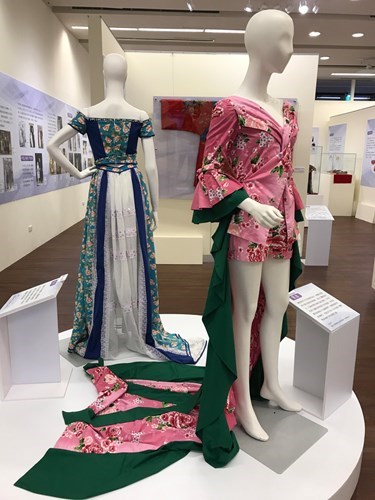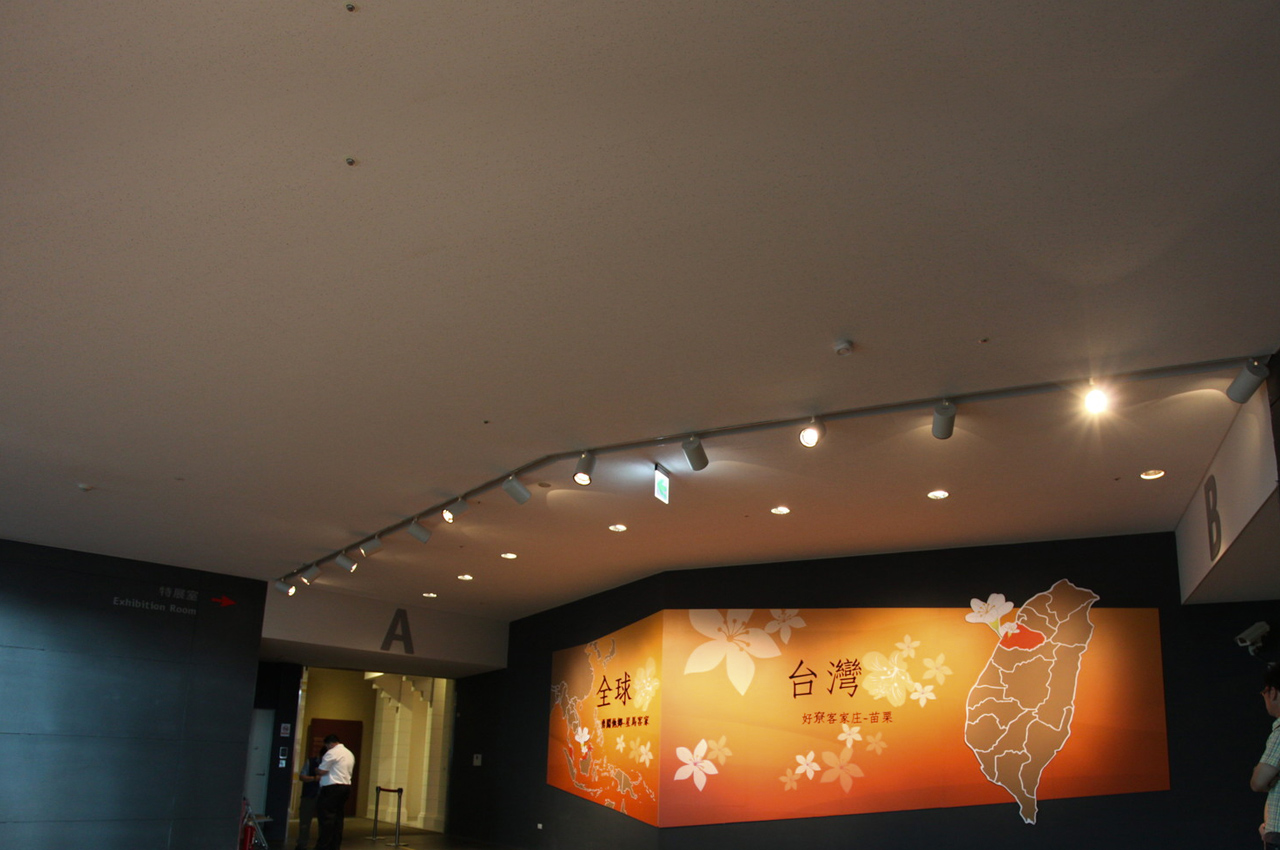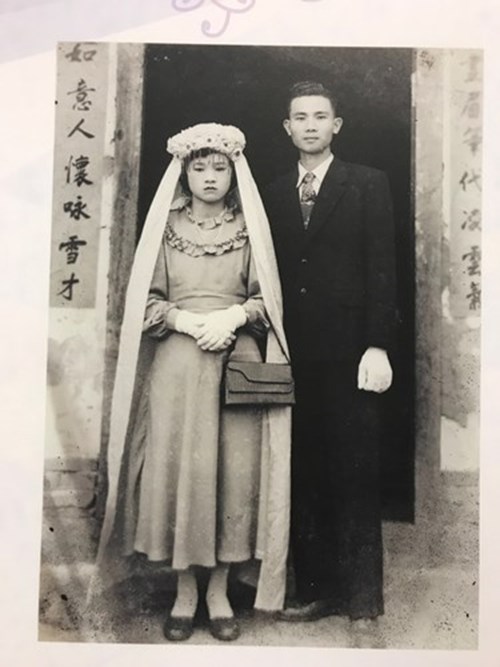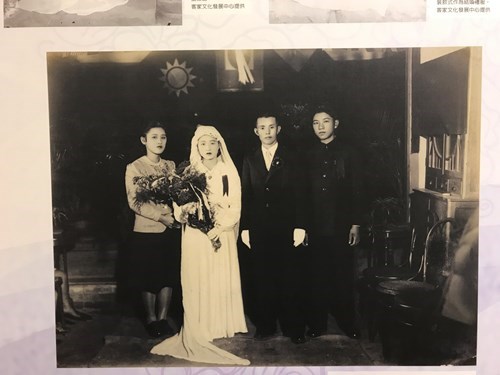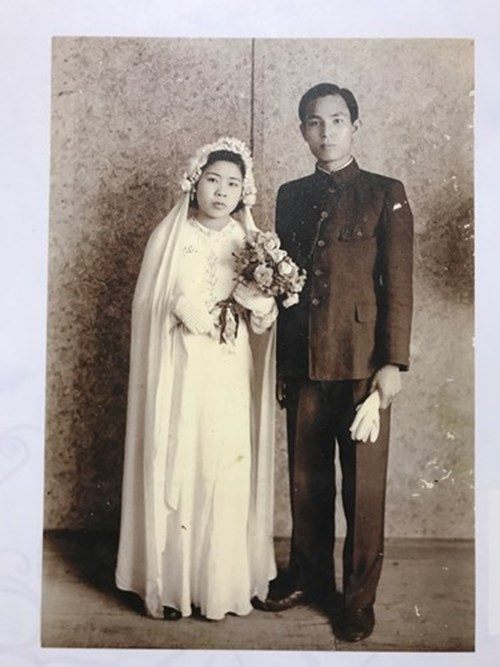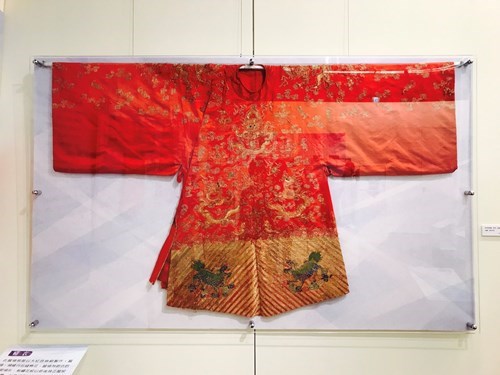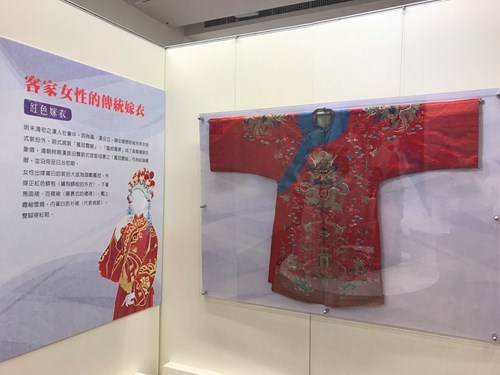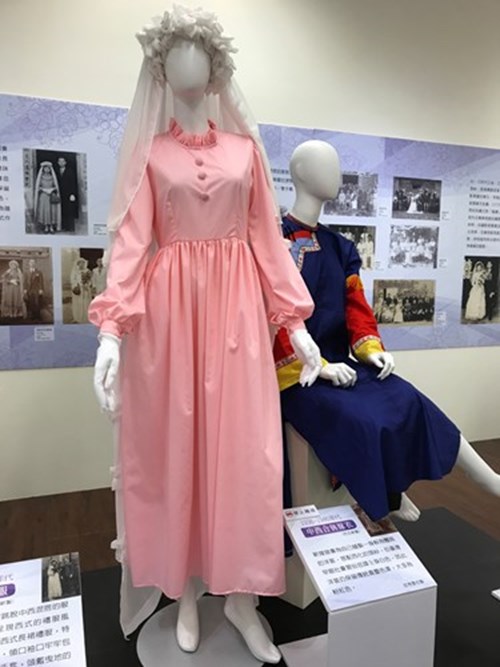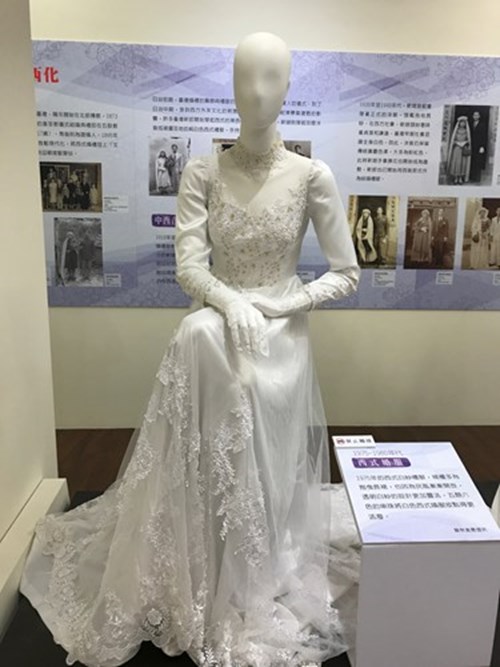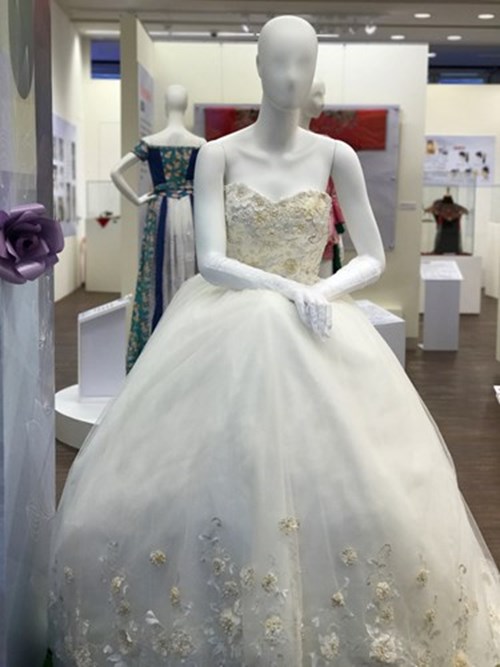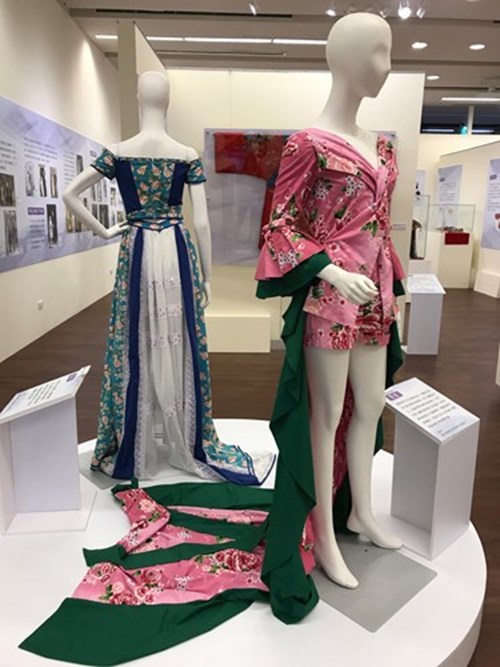Exhibition Review
5th Exhibition Hall- The Tradition and Innovation of the Hakka Wedding Dress
In the integration of diverse cultures in Taiwan, wedding dresses and accessories changed from the red ones which signified blessings to the white ones that represented sanctity. There was a transition period of the combination of Chinese and western features; in recent years, in the concept of advocating the concise, simple, elegant and natural beauty of Hakka attire, the Hakka wedding dresses with fashion design have become a trend; this exhibition will take a close look at the tradition and creativity through displaying traditional Hakka wedding dresses, accessories, old pictures of wedding ceremonies and modern wedding fashion design.
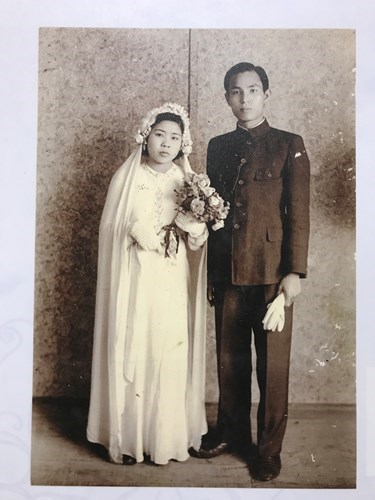
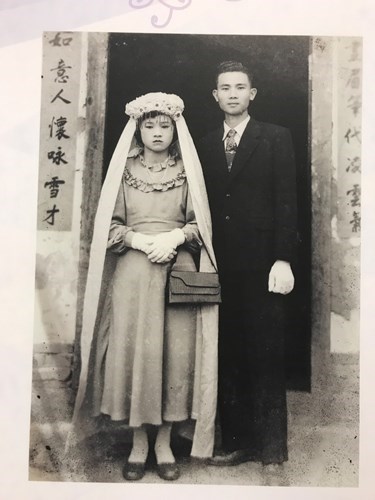
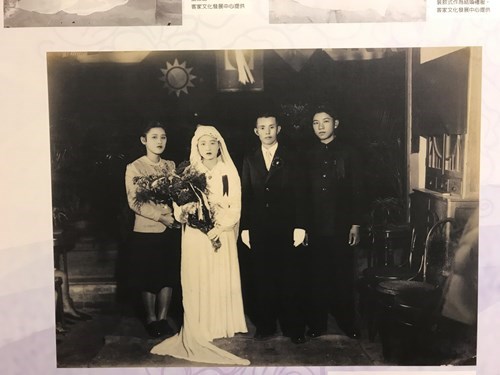
*Traditional Wedding Gowns
At the end of Ming Dynasty and the beginning of Qing Dynasty, the Han ethnic group not only maintained the attire of Ming style, but the apparels for those of the royal, for instance, phoenix coronets and the scarfs over ceremonials robes and formal wear which embroidered with dragons and phoenixes, became the symbols of nobility. In Qing Dynasty, the Han group carried on Ming Dynasty’s convention of wearing phoenix coronets and ceremonials robes for the mothers or wives of government officials as wedding dresses until the early Japanese colonial era.
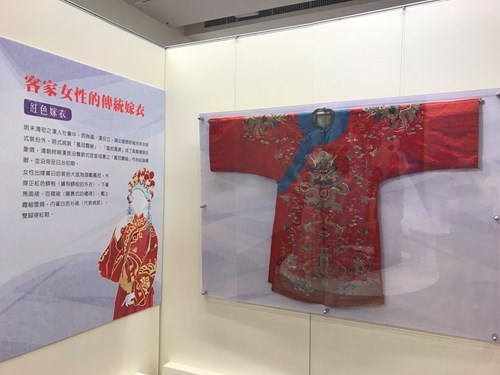
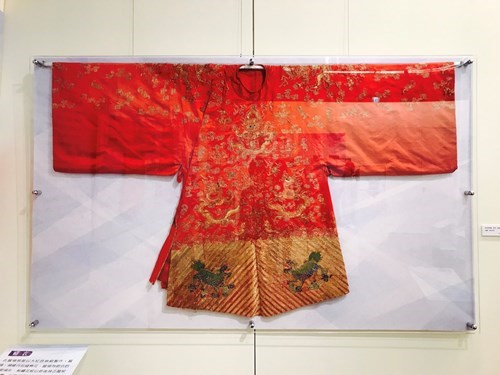
*The Introduction of Western Wedding Dresses
Pastor Mackay established Christian church in Wugu in 1873, where the first-ever Christian wedding ceremony in Taiwan was held. The Japanese colonial period began in 1895, and the Japanese government entitled western weddings as “civilized weddings” to promote modernization and transform the widely renowned traditional customs for marriages.
The traditional wedding rites of the Han ethnic group still remained in the beginning of Japanese colonial period. Nevertheless, in the middle of the era, inspired by foreign culture, brides started to put on white western wedding dresses which were long enough to reach their knees or with the hemlines touching the ground, holding bouquets in their hands, and wearing white bridal veils on their heads.
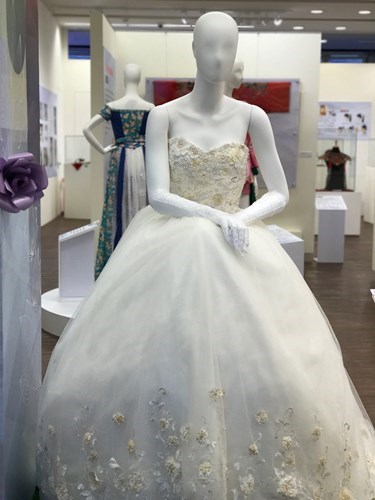
*The Female Wedding Dress Combined with Chinese and Western Styles
In 1910s to 1920s, it was the transition phase of Taiwanese wedding apparels and accessories, most brides were wearing phoenix coronets and scarfs over ceremonial robes, but due to the influences of the western atmosphere, newly wedded females began to wear a combination of Chinese and western fashion, putting on the traditional attire with white bridal veils.
In 1930 to 1940, all of the brides would wear formal dresses, with bridal veils trailing on the ground, which symbolized chastity and modesty in western culture, however, it was a taboo to dress all in white in Taiwan in early era, therefore, the dresses still remained the colors of traditional ceremonies, at the same time, it started to become a trend for the brides to hold bouquets in their hands.
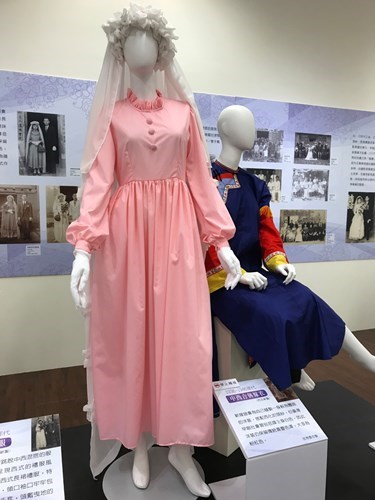
*The Period for White Bridal Veils and Wedding Dresses
In the late Japanese colonial period, wedding dresses in Taiwan completely were presented in western styles; most brides wore wedding dresses of long length, and the trains of the dresses transferred to the length of reaching the ground; all of the brides held lily bouquets in their hands in white gloves, wearing bridal veils trailing on the ground.
After the 1960s to 1970s, the bridal veils that trailed on the ground were no longer a vogue, instead, the trains of wedding dresses were gradually lengthened, matching the luxurious bouquets.
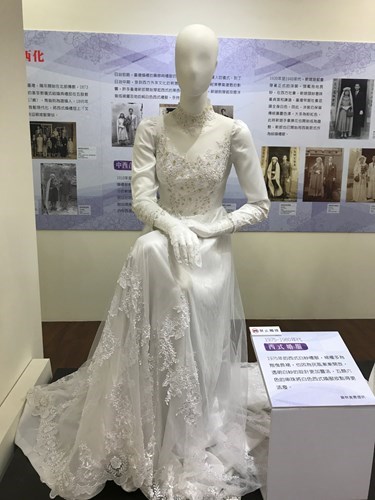
*The Fashion wedding dress
In the early era, Hakka society was quite conservative, the design of traditional Hakka female attire complied the norm of not showing hips when walking or sitting; in visual aesthetics, the female attire design emphasized the beauty of simplicity and elegance, as well as advocating the female image including being strong, independent, capable and proactive. In recent years, apart from ameliorating the elements in Hakka traditional clothing, the Hakka people started to incorporate the symbolic signs, such as red peony, tung blossoms, Magnolia coco etc., into the fashion designs for wedding dresses.
